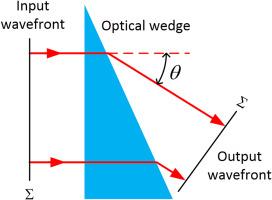Refraction techniques for continuous laser beam deflection: An overview
IF 3.5
2区 工程技术
Q2 ENGINEERING, MANUFACTURING
Precision Engineering-Journal of the International Societies for Precision Engineering and Nanotechnology
Pub Date : 2024-10-18
DOI:10.1016/j.precisioneng.2024.10.009
引用次数: 0
Abstract
This paper presents an overview of techniques based on refraction for light laser beam deflectors, including laser scanners. A new typology is proposed based on the principle of operation, and the reader is directed to the literature related to the individual subtypes and to some arbitrarily selected representative examples. This review is limited to the continuous or quasi-continuous mode of operation. Two types of basic steering deflection techniques can be distinguished, which involve a variable angle of incidence at the refractor, and a variable refractive index. Techniques with a variable angle of incidence at the refractor can be divided into the following main subgroups: rotary wedge, Risley prism, double lens adjustable optical wedge, liquid wedges, decentered refractors, and variable curvature of the refractive interface. Two main subgroups of techniques based on variable refractive index are highlighted: those in which the refractive indices of the media that create the refracting boundary are changed, and those that use a variable gradient index for a medium. The main technical parameters (such as resolution, deflection angle, speed etc.) and useable properties are specified for each technique.

用于连续激光束偏转的折射技术:概述
本文概述了基于折射技术的光激光束偏转器(包括激光扫描仪)。根据工作原理提出了一种新的类型,读者可参阅与各个子类型相关的文献和一些任意选择的代表性实例。本综述仅限于连续或准连续工作模式。基本的转向偏转技术可分为两种,一种是折射器入射角可变,另一种是折射率可变。折射镜入射角可变的技术可分为以下几大类:旋转楔形镜、Risley 棱镜、双透镜可调光学楔形镜、液体楔形镜、分散折射镜和折射界面曲率可变。基于可变折射率的技术主要分为两类:一类是改变形成折射边界的介质的折射率,另一类是使用介质的可变梯度折射率。每种技术的主要技术参数(如分辨率、偏转角、速度等)和可用特性都有具体说明。
本文章由计算机程序翻译,如有差异,请以英文原文为准。
求助全文
约1分钟内获得全文
求助全文
来源期刊
CiteScore
7.40
自引率
5.60%
发文量
177
审稿时长
46 days
期刊介绍:
Precision Engineering - Journal of the International Societies for Precision Engineering and Nanotechnology is devoted to the multidisciplinary study and practice of high accuracy engineering, metrology, and manufacturing. The journal takes an integrated approach to all subjects related to research, design, manufacture, performance validation, and application of high precision machines, instruments, and components, including fundamental and applied research and development in manufacturing processes, fabrication technology, and advanced measurement science. The scope includes precision-engineered systems and supporting metrology over the full range of length scales, from atom-based nanotechnology and advanced lithographic technology to large-scale systems, including optical and radio telescopes and macrometrology.

 求助内容:
求助内容: 应助结果提醒方式:
应助结果提醒方式:


